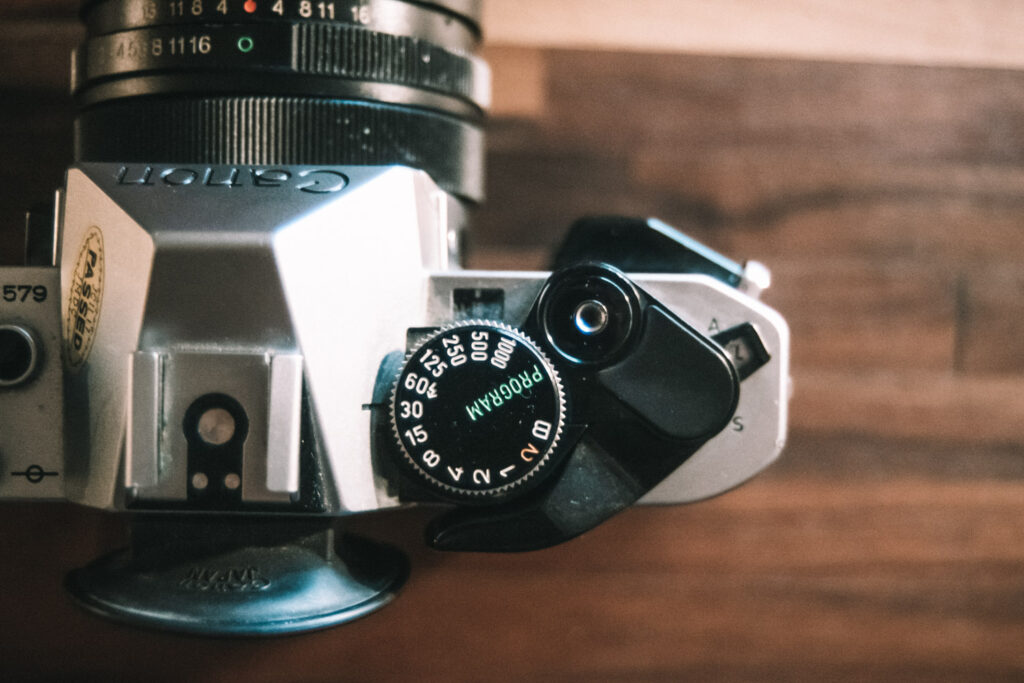In 1988, amidst the rising tide of photography innovation, Canon released a camera that would pivot the trajectory of the point & shoot series. The Canon Zoom, simply labeled and brilliantly designed, wasn’t just another camera—it was a statement, a testament to Canon’s adaptability and foresight. This article dives deep into this iconic model, examining its features, design, and lasting impact on the world of photography.
Design and Features
Canon, a pioneer in the world of photography, has released numerous models throughout its existence, each with its distinct significance. The 1988 camera labeled simply as “Canon Zoom” is a model that bears a particular weight in the company’s point & shoot series.
While dual focal lengths had been seen in previous Canon models, this camera stood out with its 35-70mm zoom lens – a feature that was relatively rare at its time but set a trend that would dominate the 1990s. To cater to a global audience, this camera was strategically branded as Autoboy Zoom in Japan, Sure Shot Zoom in the Americas, and Prima Zoom in Europe, Asia, and Oceania.
Film and Film Format
Canon Zoom was introduced as Canon’s first fully automatic 35mm autofocus camera with a zoom lens. This release marked a pivotal moment where the age of zoom compact cameras began to overshadow the single-focal-length compact camera market.
Given the camera’s metering range of EV 6 – 17 (at ISO 100) and a film speed range of ISO 50 – 1600 (with DX code), photographers have a decent latitude of film choices. Recommended films for this camera include:
- Kodak Portra 400: Versatile for both portraits and landscapes.
- Ilford Delta 3200: Great for low-light conditions.
- Ilford HP5 Plus 400: An excellent choice for black and white photography.
Power Source and Battery Life
Powering the Canon Zoom is a 6 V 2CR5 lithium battery. These batteries are known for their longevity and reliability. If you’re looking to purchase one, here’s a link to the 6V 2CR5 lithium battery on Amazon.
Exposure Control and Light Metering
The camera boasts an electronic program EE driven by a stepping motor, ensuring accurate exposures. It also features a slow-speed mode, specifically tailored for capturing night scenes and fireworks in their full glory.
Size, Weight, and Ergonomics
With dimensions of 146 x 74 x 69 mm and a weight of 465g (including the battery), the Canon Zoom is a compact and portable companion for photographers on the go.
Technical Specifications
| Specification | Detail |
|---|---|
| Type | Fully automatic 35mm Lens-Shutter autofocus camera with zoom lens |
| Picture Size | 24 x 36 mm |
| AF System | Triangulation system with near-infrared beam. Prefocus enabled |
| Lens | 35-70mm f/3.5-6.7 (8 elements in 7 groups), manual zooming |
| Shutter | Electronic programmed shutter with stepping motor |
| Viewfinder | Zoom viewfinder with projected frames |
| EE | SPC for full-auto program EE |
| Built-in Flash | Guide No. 11 – 14 (at ISO 100 in meters) |
| Power Source | One 6 V 2CR5 lithium battery |
| Film Loading & Advance | Automatic with built-in motor |
| Frame Counter | Seven-segment LCD on camera top LCD |
| Film Rewind | Automatic rewind with built-in motor |
| Dimensions & Weight | 1 |
Conclusion
The Canon Zoom from 1988 undeniably holds a special place in camera history. As Canon’s first foray into the world of zoom compact cameras, its release marked a shift in the photography market. Whether you’re a vintage camera enthusiast or someone looking to explore the world of film photography, the Canon Zoom is a model worth exploring.

